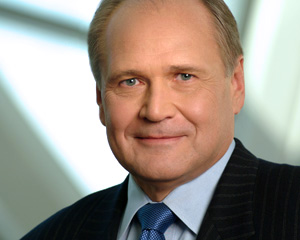
How much can you learn about the auto industry in a few hours?
Enough to make a positive impression, as long as information is delivered in a compelling way, an expert in the art of persuasion says following Monday’s lightning-quick Detroit visit by members of President Obama’s auto industry task force.
Exclusivity is the key, says Bob Cialdini, Arizona State University psychology professor and author of “Influence: Science and Practice.”
“There’s research to show that people are more persuaded by exclusive information than information that’s widely available to the general public,” Cialdini tells Ward’s. “So the very same set of merits, the very same case, the very same position, if it’s made in a context in which people feel that they are (among) a few who are receiving the information; they are more persuaded by it.”
General Motors Corp. and Chrysler LLC did just that yesterday when they hosted task-force members for a half-day, closed-door visit of their respective operations. The stop-in was designed to boost confidence in the auto makers’ long-term viability as they also seek billions in near-term emergency aid to survive the current economic downturn.
Task-force members were treated to access usually reserved for high-level executives and the automotive press. Their visit featured up-close peeks at closely guarded future products only hinted at in the business plans submitted last month to the U.S. Treasury Dept. – documents that have been released to the public.

This time, the auto makers’ message was clear, says Gerald Meyers, University of Michigan business professor and former CEO of American Motors Inc.: “’We’ve got some real hardware. I’m going to show it to you. I want you be impressed by it.’”
However, he suggests, the subtler intent of the visit was to inject some emotion into the task force’s deliberations.
“This task force has not one scintilla of automotive understanding,” he says. “They don’t have the vibrations, they don’t have the emotion that you get with hands-on (exposure to) the hardware. The automotive business, the product part of it and maybe distribution, it’s 90% emotion and 10% engineering.”
With the exception of Ron Bloom, a former investment banker and United Steelworkers Union official, Meyers says none of the task-force members “will have any feeling for the humanity” of the auto industry.
While Chrysler’s presentation also included a tour of its pickup plant in Warren, MI, GM reportedly offered up a chance to pilot a prototype version of its Chevrolet Volt extended-range electric vehicle.
GM is mum on which executives met with the task-force members, but Chrysler was represented by Chairman and CEO Robert Nardelli, Vice Chairman and President Tom LaSorda, Vice Chairman and President Jim Press, and Chief Financial Officer Ron Kolka.
“We’re fully engaged with the Presidential Task Force on the Auto Industry, the U.S. Treasury and the White House during this process of ensuring the industry’s viability going forward,” Chrysler spokesman Stuart Schorr says in a statement. “We look forward to continuing our dialogue.”
Adds GM: “We believe today’s visit provided a constructive glimpse of GM people, their passion for their work, and the future products and technologies that are an integral part of our viability plan.”
David Cole, chairman of the Michigan-based Center for Automotive Research, admits the visit seems cursory on the surface. But he warns against discounting its significance.
“Their visit was extremely important,” Cole tells Ward’s. “There is no way they can conduct their review from where they sit in Washington. They won’t become experts in a day but can’t afford not to make an appearance here.”




